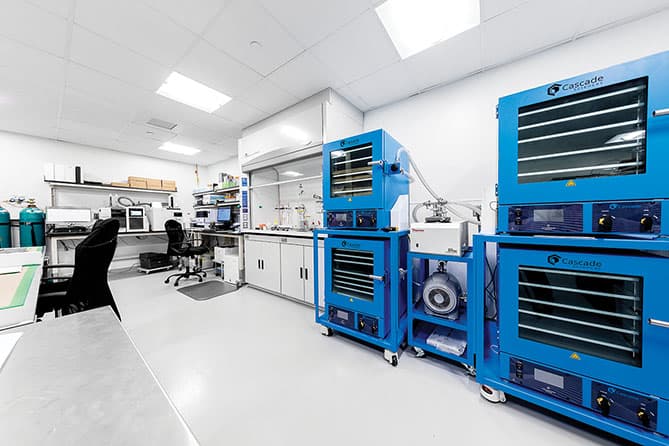Quality in, quality out.
Without good starting material, cannabis extractors don’t have much to work with.
Ensuring cultivators provide excellent flower in a consistent manner is an important part of the process for any successful extraction company.
In order to establish that a cultivator is providing first-rate material, extraction companies should:
- Visit the facility to evaluate how the plants are grown.
- Determine exactly how the cannabis is harvested and if that process is in line with what is desired.
- Coach growers on the best method for storing flower destined for extraction.
- Test the flower in-house as it comes in and provide feedback to the grower.
“We’re always working with our partners to create a better product and a better experience,” said Eli Bilton, CEO of Attis Trading Co., a vertically integrated cannabis business based in Portland, Oregon.
Tour the Site
Visiting the grow facility is a good first step to determine if the cultivator is the right fit to provide raw materials.
“We will always tour the garden first,” said Murphy Murri, director of research and development for Sano Gardens, an extraction company based in Commerce City, Colorado.
She’ll drive four or five hours—to the other side of the state, if necessary—when she’s interested in working with a new grower.
“We have to go in there and see what’s going on,” Murri said.
During the site visit, Murri is looking for any indications there might be contaminants such as mycotoxins, mold or yeast, which can be determined by evaluating the cleanliness of the facility.
“Just because the flower they sell us passes testing doesn’t mean there aren’t risks inside their facility,” Murri said.
The visit also gives her insights into what lights and fertilizers the growers are using. She’s also evaluating the morale of the company’s staff and if there’s a high turnover rate, which can be “problematic.”
“If they’re constantly changing their gardener, we’re left with these huge variations in our output,” said Murri, whose company creates live resin and vape cartridges. “We want consistency.”
Matthew Anderson, CEO of Vanguard Scientific, an Aurora, Oregon-based company that services the marijuana and hemp extraction industry, also encourages site visits.
“Meeting the grower at the farm and on site takes away a lot of mystery around the conversation,” he said. “Any grower can produce one premium cola or one nice, premium batch.” But he’s also looking for consistency.
Anderson has a checklist that he runs down when he tours a grow site. He wants to know:
- Does the grower have adequate sunlight?
- How will the crop be planted?
- What does the harvest schedule look like?
- What genetics are being used?
- What’s the expected yield?
- How many plants are grown at once?
Anderson also recommends asking for a sample of the product.
He’ll then ask the grower to take a tour of the extraction site so everyone is on the same page.
Harvest Evaluation
Bilton coaches his growers that if the flower is intended to be sent for extraction, it’s better to grow the more commercial strains that lend themselves to higher potency and higher yield, such as Silver Haze, Northern Lights and Chemdawg.
He’s also coaching the cultivators to provide strains with certain terpene profiles and minor cannabinoids such as THCV and CBG.
Murri said too many cannabis products contain the terpene myrcene, for example, and she likes to work with cultivars that express other flavors to add variety to her products.
For Murri, her company’s focus is on live resin, which requires fresh frozen material, so the harvest is crucial. “I want it as fresh as I can get it,” she said.
Murri said she focuses on terpene content, and—unlike cannabinoids, that accumulate in the plant over time—terpene levels can change every day.
“That means whatever’s happening with that plant right before it’s harvested, that’s the content we’re going to get,” Murri said.
She’s interested in plant health and how the cultivator cuts down
the plant. The longer the plant is out in the open before it’s frozen, the more terpene content can be lost, she said.
“If you have a stressed-out or struggling plant, and you harvest right away rather than giving it time to recover, it’s going to smell way less appealing,” Murri said.
Packaging Feedback
Aside from harvesting and strain-selection feedback, Bilton coaches growers about optimal methods for storing cannabis.
He recommends they avoid using plastic packaging such as turkey bags, because light breaks down the plant material. Such packaging also traps moisture and air, which will oxidize and ferment the flower and doesn’t lend itself well to extraction.
Instead, Bilton suggests cultivators store flower in mylar bags—similar to those used for potato chips—to keep light and oxygen out.
Murri posits that growers should shuck buds into frozen bags right away. And don’t pack those bags so full so that the flower can’t move around.
If raw product is stuck together, it will develop flat spaces, and compacted plant material can cause difficulties during the extraction process.
Next, get everything immediately into the freezer. “The sooner you can get it taken care of and frozen, the better,” Murri said.
In-house Testing
Anderson recommends testing the product for potency throughout the process. Testing can also include determining the loss rate to find out the amount of fats, waxes and lipids as well as tracking the terpene profile.
Once a company has narrowed down which cultivars produce the desired potency and terpene profile, Anderson advised that extractors “talk to the farmer and say it’s in both of our best interests to grow this cultivar or strain,” he said.
Murri concurs, saying a lot of growers don’t test enough during the harvest phase.
“Test those buds every single day and wait to harvest until they produce the most (terpenes),” she said.
She suggests doing the same for cannabinoid content. A lot of growers establish a schedule and cut down plants on a set day, but waiting a few more days might be the difference in yield of a whole percentage point in terms of resin and terpene production.
Murri also tests the raw material for terpene profile and potency multiple times. “We put the labs to work for us,” she said.
The lab results are one way Murri can demonstrate to a grower that one version of the Honey Banana strain is better than another, and it’s not subjective. For instance, one batch might have 26 different terpenes at 7% total terpene content versus 18 terpenes at 4% total content in another.
“Then it’s very easy for me to say, ‘Here’s why, and do better,’” she said. “We can bring math into it.”





